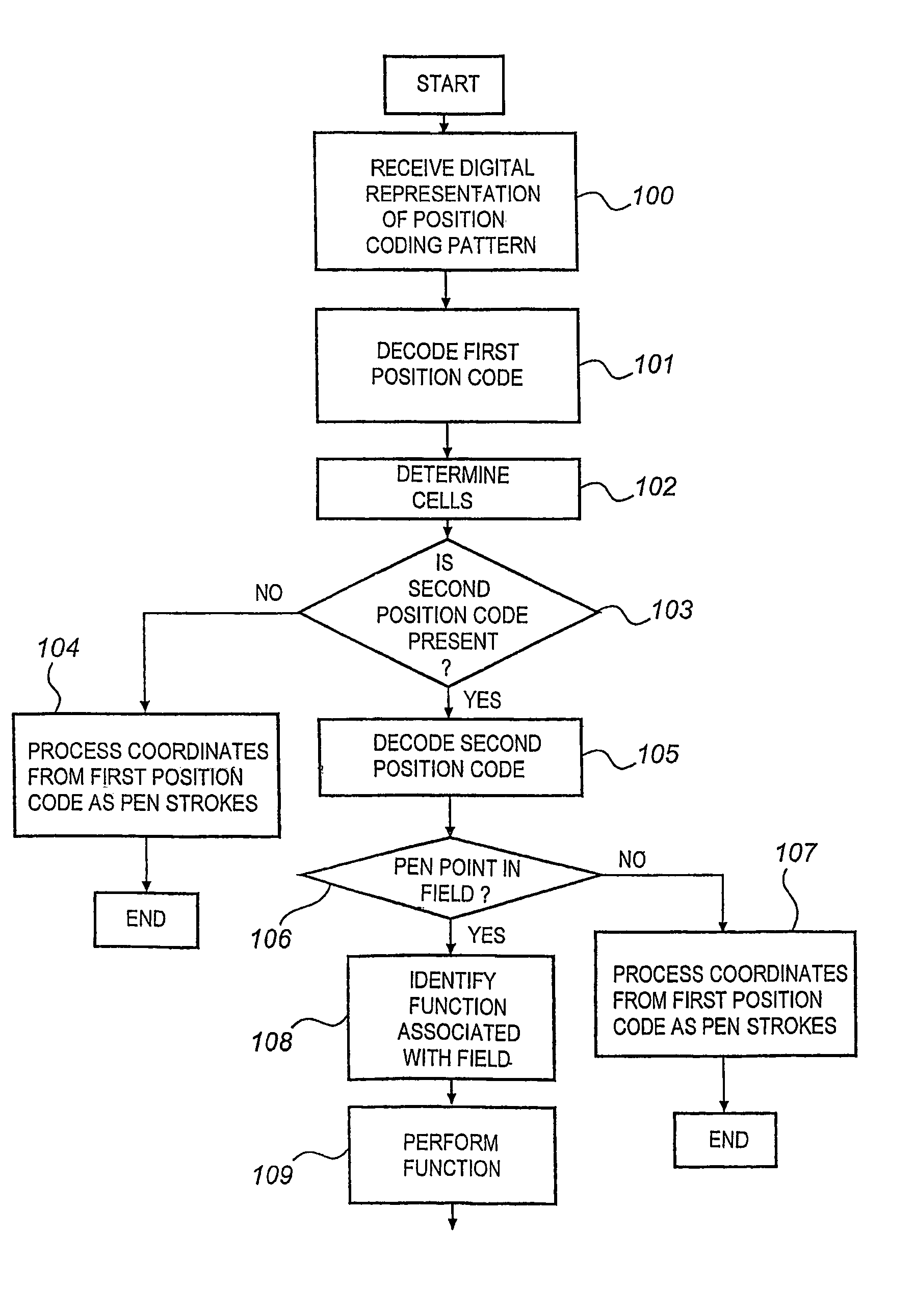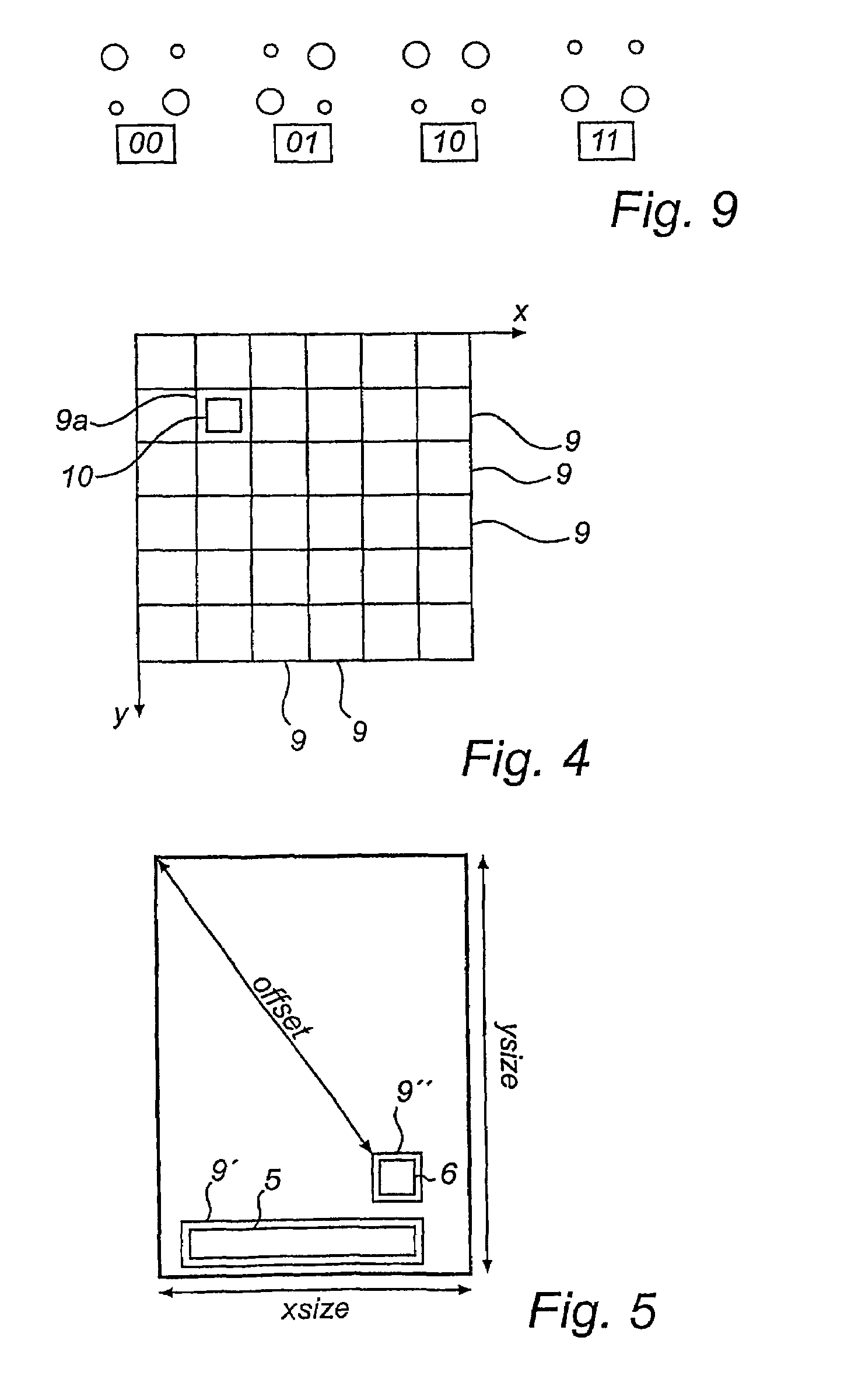Position-coding pattern
a position-coding pattern and pattern technology, applied in the field of position-coding pattern, can solve the problems of discontinuous position-coding pattern on the base, inability to perform the function intended by the user, and undesirable boundary areas without position-coding pattern
- Summary
- Abstract
- Description
- Claims
- Application Information
AI Technical Summary
Benefits of technology
Problems solved by technology
Method used
Image
Examples
Embodiment Construction
[0052]FIG. 1 shows schematically a system for information management in which the present invention can be used. The system comprises a base 1 in the form of a sheet of paper, a user unit 2 and an external unit 3. The paper 1 is provided with a position-coding pattern (not shown in FIG. 1). The user unit 2 is used to write on the paper 1 using a pen point T and to simultaneously record the pen strokes in digital form by means of a sensor S which images the position-coding pattern on the paper 1. The digitally recorded information can be processed in the user unit 2 and / or the external unit 3, to which it can be sent automatically or at a signal from the user.
[0053]The paper 1 shown in FIG. 1 is an example of a form which can be used for graphic e-mail messages. It has three different fields 4-6, a first field 4 constituting a message field, a second field 5 constituting an address field and a third field 6 constituting a send box. The different fields are marked on the paper in a wa...
PUM
 Login to View More
Login to View More Abstract
Description
Claims
Application Information
 Login to View More
Login to View More - R&D
- Intellectual Property
- Life Sciences
- Materials
- Tech Scout
- Unparalleled Data Quality
- Higher Quality Content
- 60% Fewer Hallucinations
Browse by: Latest US Patents, China's latest patents, Technical Efficacy Thesaurus, Application Domain, Technology Topic, Popular Technical Reports.
© 2025 PatSnap. All rights reserved.Legal|Privacy policy|Modern Slavery Act Transparency Statement|Sitemap|About US| Contact US: help@patsnap.com



